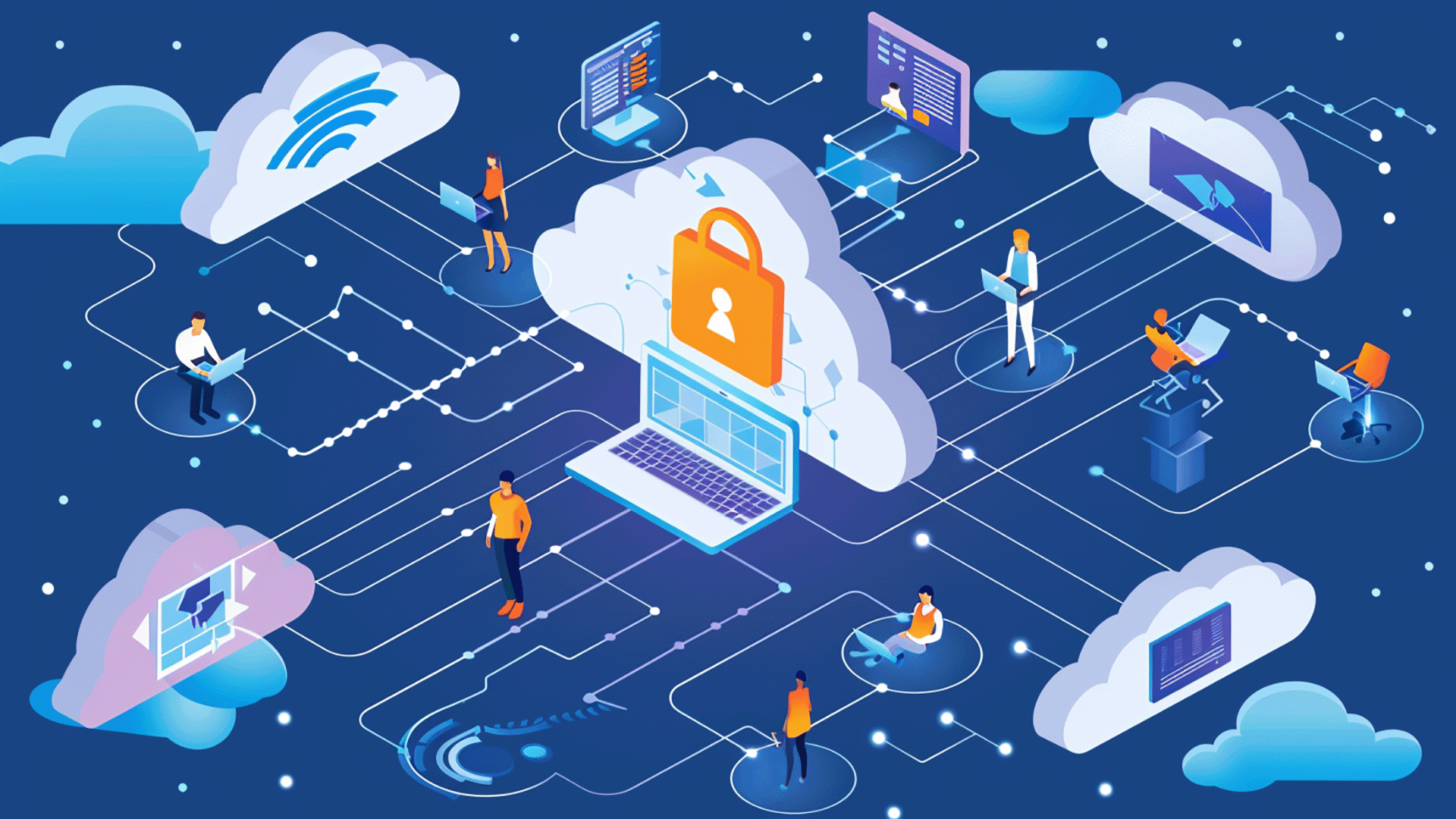SaaS Sprawl Simplified: The Path to Secure and Compliant SaaS Use

SaaS is increasingly becoming an integral facet of the IT landscape, with organizations averaging 371 different SaaS applications. This growth has happened suddenly for many organizations, with many internal teams configuring their own SaaS solutions and bypassing traditional procurement routes that help bring IT and security into the conversation. The explosive growth has resulted in a hard-to-manage SaaS sprawl. A focus on identity as the gateway to SaaS and the use of an identity-first security approach for SaaS security is a pragmatic way to regain control over the overgrowth of SaaS apps.
Identity Management and SaaS Sprawl
For many organizations, this growth has caused issues in tracking what applications the workforce is using and who has access to what. Traditional identity management systems have long been a part of on-premises IT but often fail to encompass the wide range of SaaS apps. This gap puts businesses in a difficult position, requiring them to oversee access to multiple applications that may not be covered by established security protocols.
Part of the SaaS sprawl problem stems from how easily new SaaS apps can be added to the IT ecosystem. Employees can often adopt these tools with a few clicks, bypassing the formal approval process required for most IT purchases. While allowing business needs to drive IT brings advantages in agility and flexibility, the lack of corporate oversight brings challenges in access management and potential security breaches.
Learn how to overcome the saas sprawl
Navigating Policy and Compliance in a SaaS-Dominant Environment
One of the primary challenges in SaaS Sprawl management is ensuring adherence to policies and compliance, particularly in environments where IT departments provide specific applications. While often well-intentioned, the business-led IT purchasing of SaaS leads to SaaS sprawl and introduces significant new risks and a massive expansion of an organization’s attack surface. The unauthorized and non-vetted SaaS applications, especially those handling sensitive or financial data, can result in compliance breaches. Without a means of tracking them, organizations create their own compliance problems and remain unaware of them until a breach or audit detects them.
The Role of Manual vs. Automated IAM Processes
Even if organizations know precisely what SaaS apps they have, there are still issues with managing them all. While manual processes have been the traditional approach, they often come with high costs and operational challenges. Automated IAM solutions, on the other hand, offer increased visibility and efficiency. They can streamline access management across various applications, reduce the likelihood of human error, and enhance overall security posture with SSPM.
A solid factor to consider in this debate is how to manage the offboarding process for employees on SaaS applications. Ensuring the revocation of access to various platforms when an employee leaves is crucial yet challenging. The difficulty often lies in addressing access to non-single sign-on applications, which may fall outside the standard purview of IAM systems. Manual processes will likely overlook this aspect or create delays in removing staff after they have left. This oversight can lead to potential security breaches if former employees retain access to company data or applications.
This is where a solution like Savvy steps in, presenting itself as an identity-first security platform specifically designed for SaaS environments. Savvy’s approach is methodical, tackling the intricacies of SaaS application management through a three-pronged strategy: discovery, enablement, and remediation.
Safely Embracing SaaS
Savvy is an identity-first security platform specifically designed for SaaS environments, helping provide deep visibility into the usage of SaaS throughout the organization. This approach allows IT to tame SaaS sprawl and guide the safe utilization of business-led SaaS solutions. Savvy enables organizations to manage their SaaS IT components safely and efficiently through a multi-phased approach.
Discovery: Unveiling the Hidden Layers of SaaS Usage
The first step in Savvy’s approach is the discovery phase, uncovering the full spectrum of SaaS applications, whether sanctioned by IT or acquired through business-led actions. It creates this visibility by combining browser extensions and API integrations, with each offering a different level of insight, allowing the organizations to identify potential security risks and areas where compliance may be jeopardized.
Enablement: Empowering Secure and Compliant SaaS Usage
Once the organization understands what SaaS it has to work with, Savvy moves on to an enablement phase. This phase focuses on facilitating the safe and compliant use of SaaS applications. It isn’t just about restricting access; it’s about enabling businesses to harness the full potential of their SaaS applications securely and efficiently by assisting in defining and implementing security policies that allow for the flexible yet controlled usage of SaaS tools, ensuring that they align with organizational security protocols and compliance requirements.
Remediation: Real-Time Response to Security Challenges
Perhaps the most dynamic aspect of Savvy’s solution is its remediation capability. Savvy is designed to respond in real time to security incidents by leveraging the power of its browser extension and APIs. It can prevent access to compromised accounts and swiftly detect anomalies in identity usage. This immediate response is crucial in mitigating risks and preventing potential security breaches. By offering real-time remediation capabilities, Savvy ensures that organizations can quickly address security issues as they arise, maintaining the integrity and security of their SaaS environment.
Next Steps
Learn how Savvy can transform your organization’s approach to SaaS identity security and tame SaaS sprawl. Schedule a demo to see Savvy in action.
Embracing Savvy is not just about solving current challenges—it’s about future-proofing your SaaS security.
Subscribe for email updates




